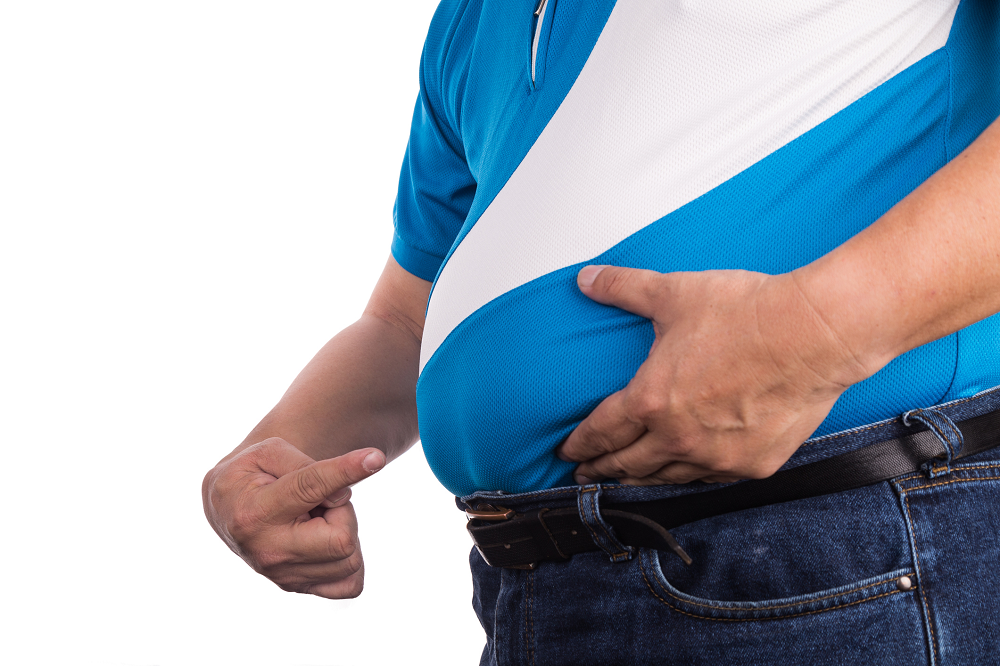
We all know about ‘pinching an inch’ – which is the ‘subcutaneous fat’ just under our skin. But did you know that there’s another type of more dangerous fat, known as ‘visceral fat’ and that it could be slowly killing you? And, what’s worse, you can’t see it so you might not even be aware of how much you’re putting your health at risk.
So, what exactly is visceral fat. Visceral fat is the type of fat that lies behind your abdominal wall, in the cavity that also houses your vital organs. If you have too much of this fat, it will crowd around your liver, pancreas, intestines and your heart and lungs. It is the result of a diet over reliant on processed, sugary foods and a lifestyle that includes too much alcohol, too much stress or too little sleep. Read more here on how alcohol can damage your health.
Gruesome Reality
A shocking autopsy video I recently watched on YouTube (which turned me right off my lunch) showed that, when excessive, this type of fat can make it difficult for pathologists to even find the heart due to the amounts of lumpy fat sitting on top of it. I watched in horror as the pathologist pointed out the small sized lungs (this was on a 25 stone / 158 kilo man); they were so small as they had so little space. I thought of how hard it must have been for this man to even breathe. And we saw a comparison of the size of his organs against a healthy man’s organs (they were literally three times the size). If you’re not too squeamish, email me on maebh.coyle@motivation.ie and I can send you the link to the video – it’s certainly an eye-opener!
Measure Up
But we’re not all going for autopsies quite yet, so how do we find out if we’re at risk of this type of dangerous fat? The most accurate way to rate visceral fat is to get a DEXA scan. However, this is unnecessary as there are other, simpler and less expensive options.
The first is to simply measure your waist at its narrowest point. If you are a woman and you have a reading of 35 inches / 89 centimetres or more, and if you are a man with 40 inches / 101 centimetres or more, then the chances are that your visceral fat rating is too high (possibly dangerously so).
If you are a client of Motivation, or would like to become one, we can also give you a ‘visceral fat rating’ with our Tanita Scales (this can be done regularly so you can enjoy watching the visceral fat rating decrease and come into the normal category, which is 1-12). A rating of 13 or above is a warning sign, which we always point out in your consultation – not as a means to shock you but, honestly, we feel it’s our responsibility to let you know that your health is at serious risk.
What Risks Does Visceral Fat Pose?
The risks associated with this type of fat are terrifying. They include high blood pressure (putting you at risk of heart attack/stroke) and increased risk of conditions associated with inflammation in the body (due to the hormone that this fat secretes which causes inflammation), including arthritis and even cancer. Excessive visceral fat can also interfere with how your liver functions, leading to insulin resistance (which is the beginning of type II Diabetes). Not only that, but research has also shown that high visceral fat storage is actually linked to Alzheimer’s and dementia.
The Good News
Thankfully, visceral fat isn’t hard to lose; in fact, it’s easier to lose than the subcutaneous fat. With each pound of you lose on the scales, you will be losing visceral fat. In fact, visceral fat is the first type of fat you lose. According to the Journal of the American Medical Association, even a modest amount of weight loss will improve your visceral fat stores and any health parameters related to it.
The best approach is a combination of a healthier diet and lifestyle (including exercise and reduced stress, as research shows that high cortisol levels – the stress hormone – can increase your chances of having higher visceral fat stores).
One experiment that was very encouraging was the one carried about by the team of researchers from the BBC’s Trust Me I’m a Doctor Programme. They recruited 35 volunteers and separated them into groups of exercise-only and diet-only over a period of six weeks. The group who worked with a dietitian to reduce their portions were the clear winners; and the results were impressive. On average, they lost 8 Ibs / 3.6kgs each, with a 5% reduction in body fat and a whopping 14% reduction in visceral fat, according to their DEXA scans. Not only that, but their other health parameters, such as blood pressure, cholesterol and blood glucose levels also improved.
So, in summation, it’s diet that really matters when it comes to visceral fat, in addition to reducing stress levels and trying to get more sleep. At Motivation, this is our area of expertise; we can show you how to eat in a way that will improve your health, reducing your fat levels while preventing hunger at the same time. We work with you and closely monitor you so that, together, we can make a huge impact on your visceral fat stores; even, as the research shows, in as little as six short weeks. Don’t sit around waiting for that nasty visceral fat to harm your body any longer. Take action today, book an assessment with Motivation Wight Management.



